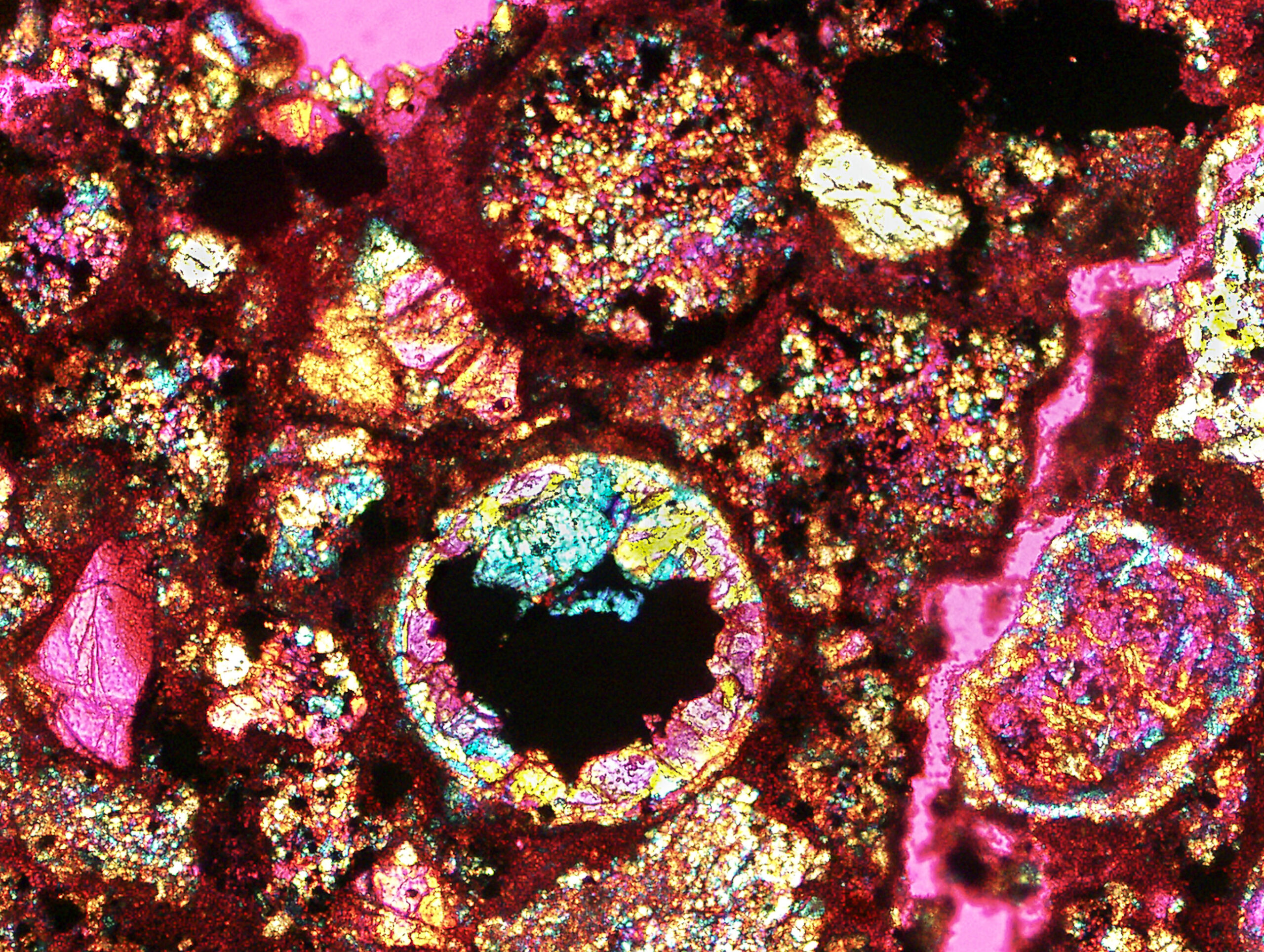v

Sirja Moberg: Soil Experiments
11.2.-13.3.
Mobergin työskentelymatkoja luonnonsuojelualueiden metsiin, meteoriittikraattereille ja Saamenmaan tunturiin yhdistää hänen kiinnostuksensa maaperään. Soil Experiments- näyttely Valokuvakeskus Nykyajassa yhdistää nämä projektit yhteen kokonaisuuteen tarjoten näkökulmia maaperän merkityksellisyyden sekä luontosuhteen pohtimiseen valokuvallisten esitystapojen kautta. Näyttely koostuu kyseisillä matkoilla syntyneestä työmateriaalista: maaperäkromatogragfioista, pigmentinsiirtotauluista, valokuva- ja videoteoksista sekä esineinstallaatiosta.
Luontoyhteys ja luonnonmysteerit ovat Mobergin taiteen ytimessä. Erityisesti häntä kiehtoo valokuvan todellisuusväite ja toimijuus todellisuuden paljastajana, piilottajana ja rajaajana.
– Se mitä kulttuurimme esteettisyyteen keskittyvät luontokuvat eivät meille näytä, ja se mikä ei luonnossa välttämättä näyttäydy arkielämän kiireistä kärsimättömälle silmälle, on työskentelyni keskiössä. Esimerkiksi maaperä on jalkojemme alla elävä entiteetti mutta meiltä alituisesti unohduksen tilassa, kuin unessa, Moberg pohtii.
Mobergin työskentelyä inspiroivat filosofi Emanuele Coccian Kasvien elämä: Sekoittumisen metafysiikkaa (2020) -kirjan ajatukset, joiden mukaan maaperä on planetaariset aivomme, planeetan kiviliha ja sen kanssa aktiivinen kommunikoija kasvien maanalaisten juurten ja mineraalien välityksellä. Moberg on kiinnostunut myös planeettamme kosmisen vuorovaikutuksen tilasta, minkä viestijänä hän kokee maahan iskeytyvät meteoriitit. Näyttelyteoksissaan hän tarkasteleekin meteoriitteja ja niiden kraatterimaisemiin sekä kilpisjärveläisiin jälkifossiilikiviin kiteytyvää syvää aikaa.
Näyttelyn maaperää-, metsäaineksia ja valokuvakemiaa hyödyntävä kromatografiasarja antaa katsojalle mahdollisuuden ‘nähdä’ maan sisään sekä pohtia maaperää elämämme peruspilarina. Maaperäkromatografia on 50-luvulla biodynaamiselle maataloudelle kehitetty menetelmä tutkia viljeltävän maaperän ominaisuuksia visuaalisesti. Mobergin teossarja on tehty luonnon monimuotoisuuden säilymisen puolesta luonnonsuojelullisesta sekä hänelle henkilökohtaisesta näkökulmasta. Sen lisäksi että taiteilija asettaa maan elementtejä kameransa kohteeksi, kuten Kuonarjohka-videoteoksessa ja mikroskooppivalokuvissa meteoriiteista sekä jälkifossiileista, käyttää hän hiekkaa ja kiviä kuvan valmistumisen materiaalina fotogrammeissaan.
Sirja Moberg (s.1989) on Helsingissä työskentelevä kuvataiteilija, joka valmistui taiteen maisteriksi Aalto-yliopiston valokuvan linjalta vuonna 2020. Hänen projektinsa ovat pitkäaikaisia, ja hän työskentelee kokeellisen valokuvan, videon, valon, installaation ja biotaiteen parissa. Aikaisemmat soolonäyttelynsä Moberg on pitänyt luonnossa tai vaihtoehtoisissa näyttelytiloissa. Hän on osallistunut lukuisiin yhteis- ja ryhmänäyttelyihin suomalaisissa gallerioissa ja museoissa.
Näyttelyä on tukenut Taiteen edistämiskeskus (Taike). Kiitos Suomen Biotaiteen Seura ja Kumpulan Geologiset kokoelmat (Luomus).
///////
Sirja Moberg: Soil Experiments
Moberg’s artistic field trips to the forests of nature reserves, meteorite craters and the fell of the Sámi Land combine her interest in soil. The Soil Experiments exhibition in Photographic Center Nykyaika combines these projects into a single whole, and offers perspectives on the significance of the soil and the nature relationship through photographic representations. The exhibition constructs of working material created during these trips: soil chromatographies, pigment transfer canvases, photographic and video works, and an installation.
The connection to nature and nature mysticism are at the core of Moberg’s art. In particular, she is fascinated by the reality claim and agency of a photograph as a revealer, concealer and delimiter of reality.
– In our culture, what nature photographs that focus on aesthetics do not show us, and what nature does not necessarily show to the impatient eye of the busyness of everyday life, is at the heart of my work. For example, the soil is a living entity under our feet, but we are constantly in a state of oblivion with it, as if in a dream, Moberg ponders.
Moberg’s work is inspired by some ideas of the book by philosopher Emanuele Coccia: The Life of Plants: A Metaphysics of Mixture (2020), according to which the earth is our planetary brains, the stone flesh of the planet and with it an active communicator through the underground roots and minerals of plants. Moberg is also interested in the state of our planet’s cosmic interaction, which she experiences as a communicator of meteorites that strike the Earth. In her exhibition works, she examines meteorites and the deep time crystallizing in the landscapes of craters and trace fossil rocks from Kilpisjärvi.
In the exhibition, the chromatography series which uses soil, forest materials and photographic chemistry gives the viewer the opportunity to ’see’ inside the earth and reflect on the soil as a fundamental pillar of our lives. Soil chromatography is a method developed in the 50s for biodynamic agriculture to study the properties of cultivated soil visually. Moberg’s series of chromatography has been created for the preservation of biodiversity from a nature conservation perspective and from an artist’s personal perspective. In addition to placing elements of the soil as the object of her camera, as in the Kuonarjohka video piece and microscopic photographs of meteorites and trace fossil rocks, the artist uses sand and rocks as material for the completion of an image in her photograms.
Sirja Moberg (b. 1989) is a Helsinki-based visual artist who graduated with a Master of Arts degree from Aalto University’s photography department in 2020. Her projects are long-term, and she works with experimental photography, video, light, installation and bio-art. Moberg has had her previous solo exhibitions in nature or in alternative exhibition spaces. She has participated in numerous joint and group exhibitions in Finnish galleries and museums.
The exhibition has been supported by the Arts Promotion Centre Finland (Taike). Thank you to the Finnish Bioart Society and Kumpula Geological Collections (Luomus).